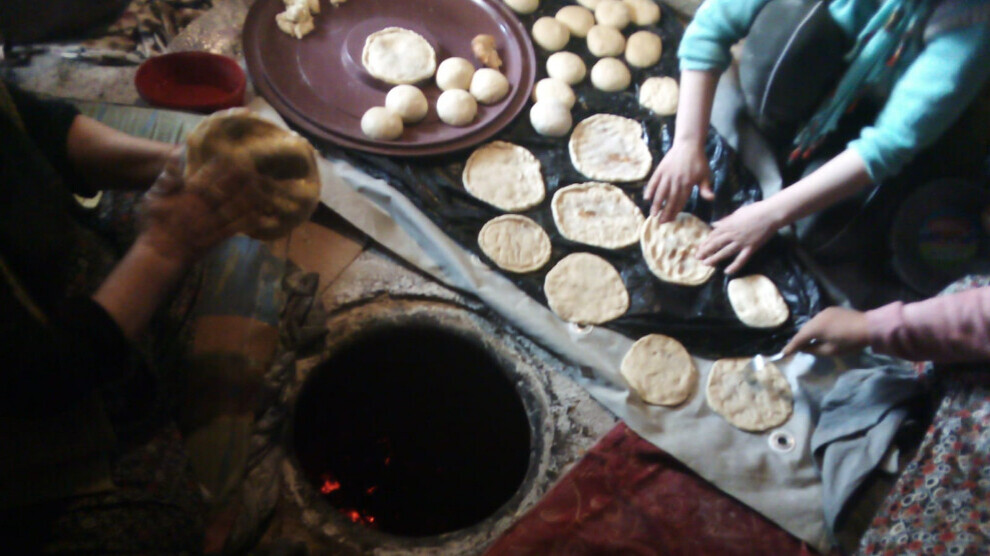The special bread of Serhat
Kadê (Kurdish pastry), destenan (tandoori bread) and nanê loş (lavash bread) from the Serhat region are cooked by the skilful hands of women in a collaborative fashion to be consumed during the month of Ramadan.
Kadê (Kurdish pastry), destenan (tandoori bread) and nanê loş (lavash bread) from the Serhat region are cooked by the skilful hands of women in a collaborative fashion to be consumed during the month of Ramadan.

Thousands of years old traditional Kurdish bread, kadê, destenan, nanê dim, is being kept alive with the labor of Kurdish women. Women from Hakkari and Van cook it especially during Ramadan, Newroz, weddings, festivals and special occasions.
The preparation and making of these special breads, which are recreated by the skilful hands and labor of women, is difficult and laborious.
The women, who come together before sunrise, make a feverish preparation in the tandoor. Some are engaged with pastry, some carry wood, while others light a fire in the tandoor.
Bread is baked for the house almost every day. These baked breads are consumed during the months of Ramadan and Eid.
The most important feature of this traditional Kurdish bread is that it does not go stale for weeks or even months. Because of this feature, it has been preferred for centuries.
We cook for special occasions
Semra Uyar, who lives in the Tusba district of Van, said that they bake bread for the month of Ramadan and some special days. Uyar said that women come together to bake bread every day: “In the past, almost every family used to bake. It was in a festive mood. This tradition continues, albeit not as before. Some of the breads are made with butter, halva, walnuts or plain. We will eat these long-lasting breads in Ramadan.”
Our national bread
Stating that they make bread every Ramadan and other special days, Asiye Tekin said that this type of bread is indispensable for Kurds.
Tekin said: “This bread is very important, especially for large families. It does not go off due to the ingredients we put in it. While some of the buns we make are plain, we put halva or walnuts in some of them. This bread is our national bread. We learned how to make it from our grandmothers and mothers. We will teach it to our children.”